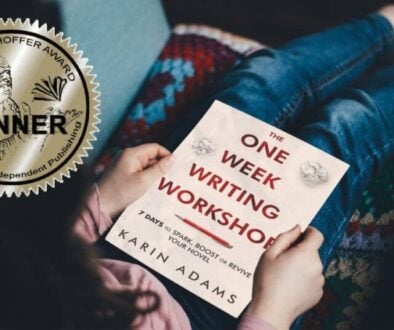There isn’t a wrong place to start when it comes to planning a story.
For me, the dreaming/thinking/planning phase often begins with a blurry sense of all sorts of story elements: what’s going to happen, who some of the players will be, a sense of the story’s world…possibly even a vision of a scene or two that I could draft without further ado…
Inevitably, to extract the rich possibilities hidden in this blurry vision, I return to do some work on CHARACTER to really get things going.
I think we can all agree how important characters are—especially our main characters—to the form and shape of our stories.
Here are three compelling reasons to spend your creative energy on CHARACTER at the beginning of your novel writing process (you may not have thought of all of them!).
The best part is you don’t need to have your whole story concept worked out first. In fact, working on character might help you to find your story.
Planning a Story with a Character-First Approach
Find your story’s world and bring it to life
Character and story world/setting are connected. Even if you’re not writing in the first person, we’re likely going to experience the world of your story through the eyes and mind and heart of your main character.
Even if you’re writing a fish-out-of-water story where your character emphatically does NOT belong to your story’s world, the fun for you and the reader will be seeing this world through their eyes.
Getting to know your character’s background, attitude, recent history (or deep history), something about their relationships and their challenges and secrets can shape the way you present your setting, and that can affect the whole mood of your story.
A neighbourhood that a character is desperate to escape, even if it’s the dream-town for you (or a different character), will be couched in oppressive terms and rife with details that make it feel stifling. A character at ease with their surroundings, even the most ramshackle or strange to us, will mostly see its charms, or take it for granted—but the way you talk about it will begin to make your readers experience this way, too.
Find your subplot
You might have a general idea, or even a very well-developed idea, for your main storyline. But when we get to know our characters beyond the basic biographical facts, ideas for subplots have a way of springing to life—those interesting secondary storylines that echo, support, or otherwise enrich your main plot.
Perhaps there are relationship issues for your hero to work through, or an unresolved mystery from the past. Maybe things you’re imagining about your secondary characters in your character work suggest a parallel storyline. Perhaps it leads you to imagine a smaller scale adventure in which your main character doesn’t necessarily feature—but one that reinforces your story’s theme or provide a crucial turning point.
Find your story
Sometimes just by getting to know our characters better, we find the story we actually long to tell. Maybe we begin our work on a main character thinking we’ll be writing about a competitive swimmer dealing with a physical injury on the eve of the big swim meet. But as we mine this character’s life, we find that his lifelong admiration for a cousin who has now fallen from the family’s favour might make for a more compelling tale. Or perhaps the conflict between his own dreams and his family’s expectations emerge as worthy of centre stage, making the swim meet a story detail rather than the culminating story event.
As for how to dream your characters into being, that’s entirely up to your creative self! To help you get started, I do share some ideas here in my article Coming Up With Character Ideas For Stories.
If you’re looking for a host of concrete writing activities that have been tested in real-world writing workshops, Day Two of my book The One Week Writing Workshop: 7 Days to Spark, Boost or Revive Your Novel is devoted to character creation strategies. Not only that, the activities that follow in the book continue to challenge you to dig deeper into your characters giving you dozens more ways to enrich the cast that populates your book—because of course, character is at the heart of story.



